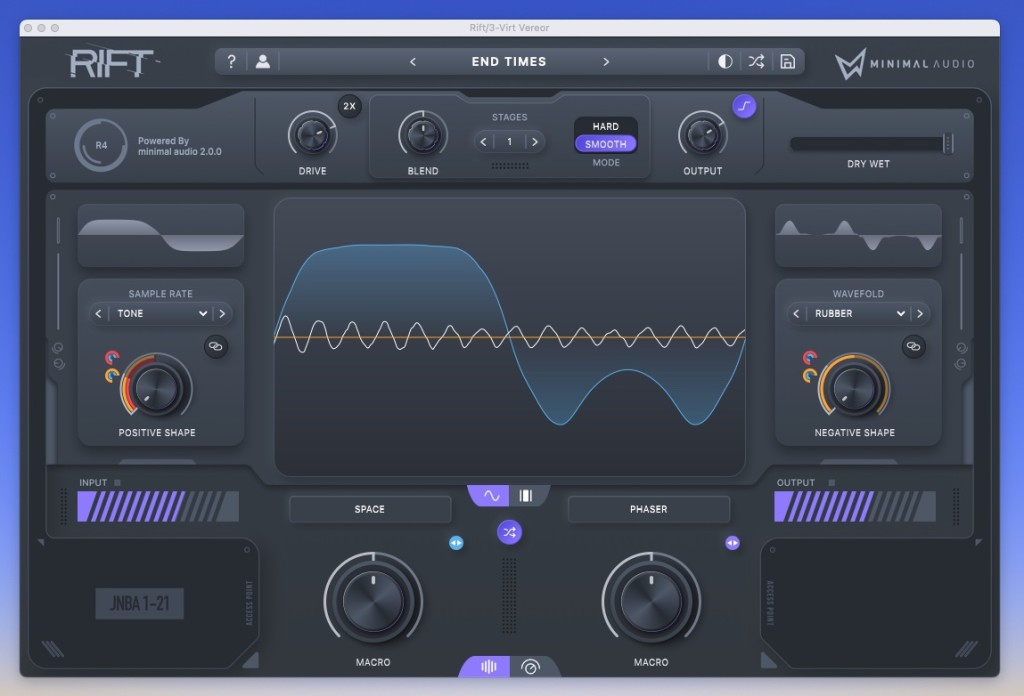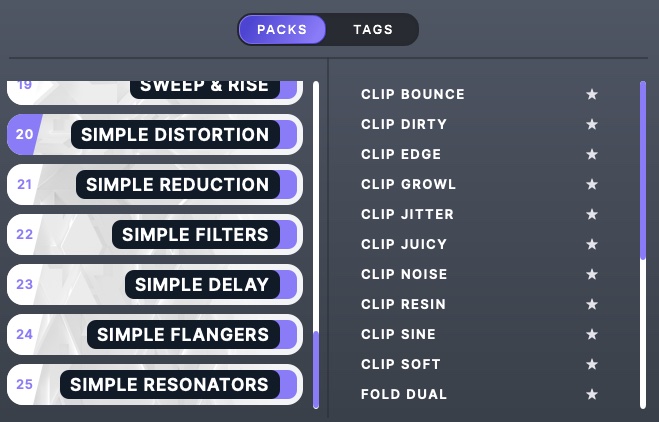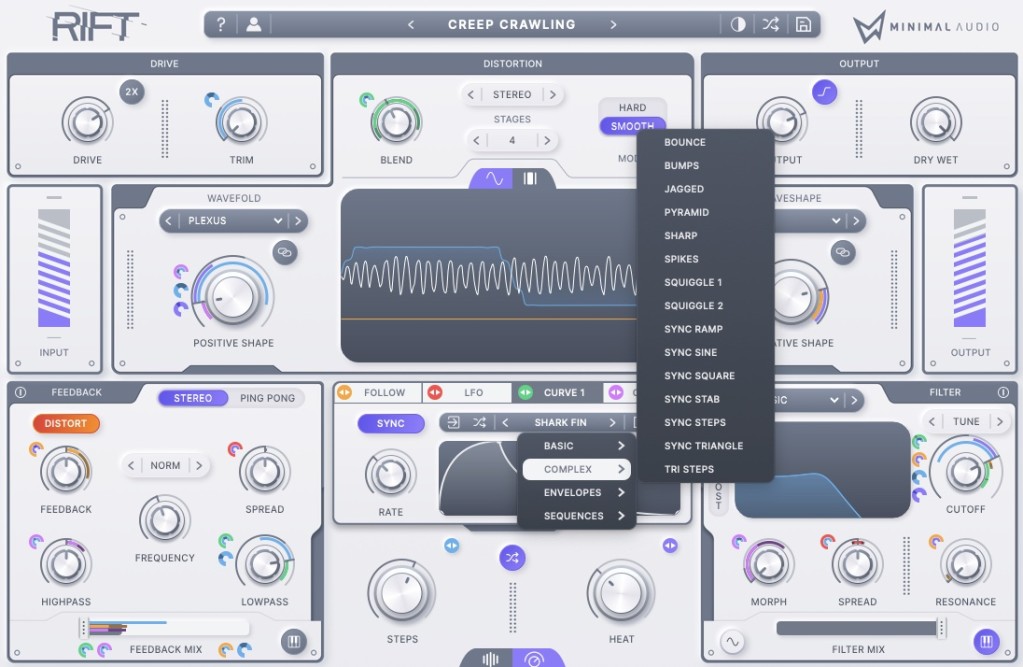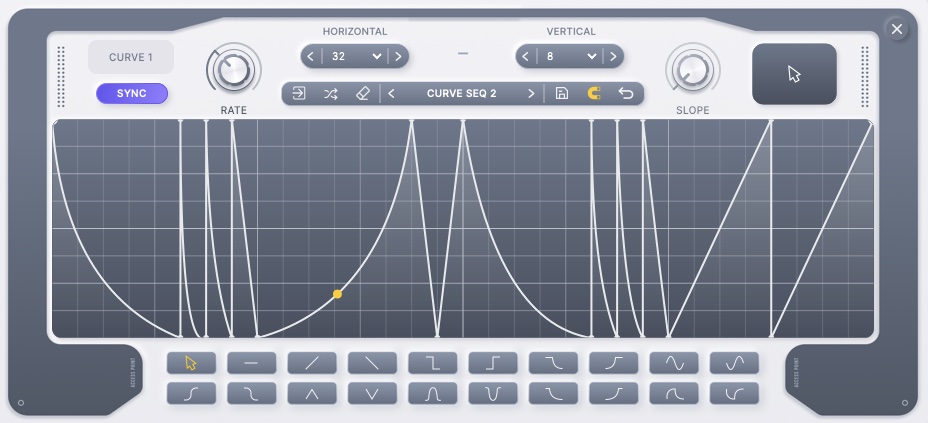It’s all about positive and negative distortion. Today Minimal’s Rift 2.0 hits, with refreshed features, an updated look, and must-have Apple Silicon support. I’ve had an advance copy; here’s a hands-on.
Rift is the latest multi-function distortion plug-in. We’ve seen something like that before – iZotope’s Trash springs to mind. But Rift brings a more modern UI to the task, plus some unique algorithms. It’s also about the nicest architecture I’ve worked with as far as precisely dialing in the sound you want, driving more processing stages for added harmonic content, and adding modulation.

In fact, even calling it distortion isn’t entirely fair. This feels like a deep semi-modular synth that’s missing only oscillators – and you can in fact create elaborate morphing soundscapes with it as easily as conventional distortion. The feedback, filtering, and muti-band effects combined with elaborate sequencing mean you might well approach it as a sound animation tool.
The feedback, filtering, and muti-band effects combined with elaborate sequencing mean you might well approach it as a sound animation tool.
The best place to start is to understand the architecture under the hood. Rift has 30 algorithms to choose from, which you then apply to what they describe as multipolar processing. The twist here is being able to work with the negative and positive portions of the waveform independently, then blend between the two. Add modulation to that, and you can create various rhythmic and morphing effects.
Features:
- 30-algorithm multipolar distortion engine
- Pre/post filtering with morphing, 24 types, running in stereo
- Physical modeling feedback and delay effects
- Modulation with sequenced envelopes (and curves)
- Multiband effects with custom routing
- Feedback and filter can track pitch (via MIDI)
New in 2.0:
- Multi-band effects processing (really, what I was waiting for – more on that below)
- New dark theme and updated light theme (I swear I’ll also use it more as it’s nicer to look at… probably even imagining that makes it sound better)
- Apple Silicon support
- CPU optimization on all platforms
“Multipolar” may sound like a gimmick, but it’s a departure in sound you can hear right away. Many competing distortions just lather on distortions in parallel or serial and turn everything into fuzz. Sometimes that’s very much what you want – it’s closer to what you’d get from a pedalboard of stompboxes. iZotope’s Trash sort of clues you in right in the name, and then added cabinets and amps and convolution on top of it. But this is different; you get more control and clarity in the sound.
It’s actually so much clearer than other distortion approaches that it can be a little jarring at first, particularly if you start with the presets. You may find yourself feeling as though you were plunged into EDM territory depending on where you start. Don’t panic – there’s some great content in there. So either embrace the extremes as starting points and illustrations of the versatility of the engine or just scroll down. Minimal does what I wish all plug-in developers would do and includes loads of vanilla default presets. You’ll also find the macro controls have dramatic impact on the sound, so you might even find a preset that sounds wrong at first can be adjusted into something delightful.

Rift was already appealing, but its UI was a bit bright and hard to look at. Now there’s a new dark UI that I like a whole lot better, and they’ve made the light UI far more attractive, as well.
The other major enhancement is a flexible multi-band effects routing. Per band, you can choose gain, refiltering, and solo. Output’s Thermal uses this to excellent effect, and I missed it in Rift. With the addition here – on top of Rift’s algorithms – I think Rift just became the one to beat.
Now you just click the SCOPE icon and it brings up this clever MULTI-BAND view:
Then choose which sections you want to apply multi-band processing, one by one:
- Distortion
- Feedback
- Filter
- Refilter (that adds a second stage of filtering of the whole effect band to warm things up)
- Solo (perfect for sound design adjustment)
You can adjust low and high crossover – that’s the frequency for each band, gain for each band, and separate effect gain for each band.
Also, note that this is all before you even get into so-called “advanced” view. With the ability to control both sides of the multipolar processing, blend, macro controls, and now multi-band effects processing, this is the rare top-level UI view that allows pretty radical adjustment without making you dig into an advanced editor.
Once you do, though, you get a ton of additional controls, including per-control modulation options. Physical modeling feedback and advanced morphing are a major part of the sound, with both pre- and post- options, different algorithms, and the ability to add modulated filtering on top.


That feedback engine is also tunable to quantized pitch and scales with lots of additional tweakable options. It’s powerful enough that Minimal sells just the feedback section as its own effect. (Side note – actually we may be at a point where offering alternative tuning in effects is more important than even in synths, just in that synths are gradually adding this feature and it’s easier to hack via MIDI. I would love to tune that filter to Pélog or Maqam Rast. Feature request filed.)
But you get an envelope editor that you’d normally only see in an advanced polysynth, complete with sophisticated curve editing. That means you can think of Rift not just as a distortion tool as you might think of it coming from stompboxes, but advanced modulation with feedback and harmonic morphing. I love RATs. This is a superintelligent talking rat from Secrets of NIMH – as far as distortion goes. (Sorry, deep cut. Great book, though.)
You don’t have to get into this depth – there are plenty of presets to choose from, plus new expansion banks with still more. But I think part of the appeal of Rift is really the ability to do elaborate sequenced and morphing effects. To be perfectly honest, I have only scratched the surface of sound design. With the addition of multi-band processing and this nicer UI, I look forward to some happy months ahead of getting deeper.
These are ideas that we certainly saw in Output Thermal’s modulation, which in turn is inspired by tools like the ground-breaking Massive. But right now it’s hard to match how well-rounded Rift is – particularly given that it has Apple Silicon support. (Thermal doesn’t, Trash doesn’t, and iZotope even says in their support pages they don’t intend to offer it for Trash 2 – which is either a hint that Trash 3 is coming or a sign the whole thing is on the back burner.)
Rift is just a perfectly well-balanced, deep distortion tool. It’s the very opposite of the stompbox approach of switching it on and cranking everything – and if you want that, there are some very fine emulations in software. (Not to mention, you can always run your software through outboard gear.) But if you want to sculpt and sequence your distortion, I can think of no better current tool.
And yeah, when you just want to fire it up, it’s there for you. Here are some examples – not intended as proper demos, but a very realistic “here was me playing with it last night” scenario. And for all the depth, that’s often the starting point – stick it on a track, try dialing something in. When you do feel like designing an elaborate morphing sound, it’s a toolkit for that, too, but that’ll have to wait for another time.
I used it with the Roland Cloud TR-808, and the free synth I mentioned recently, Virt Vereor. (My other favorite distortion is now that one, too, Ruina – radically different than Rift.)
And here’s a browse through the interface:
In the meantime, this is simply one of the most powerful effects you can buy right now, full stop. If you always longed for control over distortion down to each frequency band and wanted control over time, there’s simply no deeper way to do it right now. Rift 2.0 on sale for a launch price of US$79, which would easily top my priorities for plug-in investments.
Free upgrade for existing users. (Didn’t even have to authorize it separately.)
https://www.minimal.audio/products/rift

